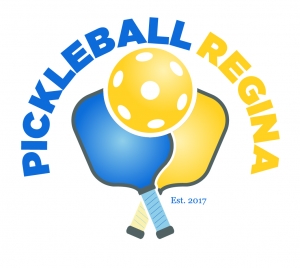Types of Pickleball Play
This page explains the different types of play you will see referred to in Pickleball Regina's programs.
Ladders:
Ladders are a competitive format where games results will move players up or down the ladder ranking each week depending on how they do.
Challenge Court:
During an Open Play session, one court may be designated a 'Challenge' court. This gives individuals interested in a more competitive game an opportunity to challenge other players. This is how it works:
- Any four players of similar skill level start the first game.
- A pair of players, gives notice to play the winners of the current game.
- The team wanting to challenge in, will indicate so verbally and by placing their paddles nearby.
- Once the challenge has been given and accepted, no other pair may challenge into the same court.
- The challenging pair will play against the team that won the previous game.
- Winners must vacate the court after they have completed two games.
- This may result in all four players vacating the court, in which case four different players will start a game.
Structured Level Play (King's Court):
The Structured Level Play format is a good option for handling sessions where there is a wide range of skill levels between players.
Structured level play begins with players being assigned to courts based on their skill rating. If you don't have a rating, you will start at 2.5. The more advanced players will play on Courts 5 & 6; beginners will play on Court 1; while intermediate players will be spread across Courts 3-4 with the more skilled on Court 4 and less skilled on Court 3.
Games will be timed – 13 minutes. When the buzzer sounds, finish the rally and the team with the highest number of points will be the winner. If there is a tie, play one more rally and the winner of the rally is the winner of the game.
Round 1 – start when the Host announces it is time to start. Stop when the 13 minute buzzer sounds.
For Round 2, the winners will move to the next higher skill level (higher numbered court) and split onto opposite sides of the net; the losers will move to the next lower skill level court (lower numbered court) and split.
Follow the same process of splitting and moving up/down for additional rounds.
If there are more than 2 people wishing to play on a specific court, the extra players (no more than two waiting paddles behind any one court) will place their paddles along the back wall of the court (not the first or last court) on which they wish to play. When the initial 4 players have completed their game, the next two people with paddles at the wall will split and step onto the court. The losing team moving down (to a lower numbered court) will sit out a game if there are any paddles waiting to come into play. No paddles are allowed behind the first or last courts.
Round Robin Play:
A “Round Robin” is a structured form of play organized by skill levels. In the time allocated to each Round Robin session you will play six games, each with a different partner and against a different pair of opponents.
You will sign up for the skill level you want to play and be assigned a number when you arrive at the court. Your number remains yours throughout the session and dictates which court you play on, with whom you are playing as a partner, and against which opponents. Your Round Robin Captain will help you get started with this. By the end of six games you will have played with six different partners and against 12 different opponents! You may have a “bye” (where you sit out for one game) if there is an uneven number of players signed up. If you have a “bye” there will be a seventh game played consisting of the “bye” players so that everybody gets to play six games.
A Round Robin Captain is present at every Round Robin. The Captain determines the rotation, manages the signup sheet and the time clock, posts the rotation and signup lists, and manages other aspects of Round Robin play. In order to keep everything running smoothly and on-time, the Captain must do some advance preparation to get things rolling. It is important that players arrive AT LEAST ten minutes before the Round Robin is scheduled to start. Late arrivals may be replaced or simply not allowed to play.
Open Play - Gold/Silver sides:
This method is used during Open Play when there are many more players than can be accommodated on the courts at one time.
As games conclude, the winners sit on the left/Gold side of the central marker and the losers sit on the right/Silver side of the central marker. The central marker is moved back and forth to indicate which side goes up next.
When a court opens, four players at a time get up to play, alternating between the Gold and Silver sides. The central marker is moved to indicate which side goes next.
Generally, if there are more than eight players waiting, games are played to 9 points, win by 1, but the Host will advise the players of the local rules.

